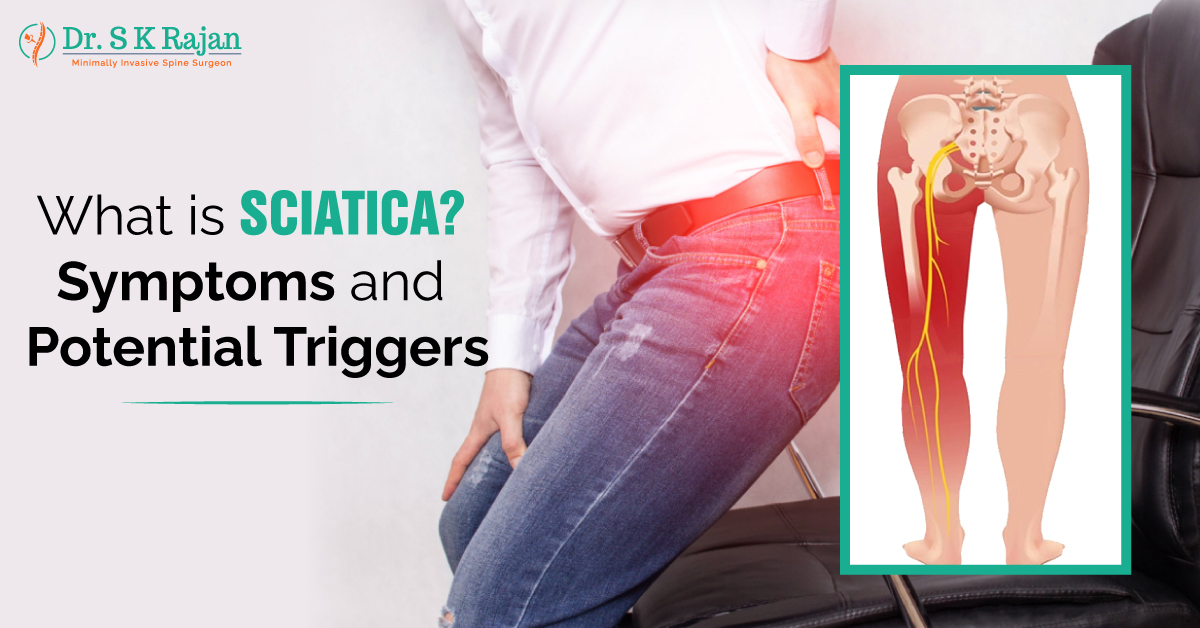
Sciatica is characterized by pain along the course of the sciatic nerve, which runs from the lower back, down the buttocks and hips, and finally down each leg. Sciatic pain typically only affects one side of the body.
Many people experience sciatica because of nerve compression caused by a bone spur, a herniated disk, or spinal stenosis (narrowing of the spine). This leads to swelling, pain, and sometimes numbness in the leg.
Although sciatica can be extremely painful, most cases improve in a matter of weeks without the need for surgery. People with severe sciatica with a lot of leg weakness or changes in their bowels or bladders might be a good fit for surgery.
Some common signs of sciatica are:
Most of the time, sciatica only affects one side of the lower body. Often, the pain goes from your lower back to the back of your thigh and down your leg. You may also feel pain in your foot or toes depending on where the sciatic nerve is hurt.
Some people with sciatica have pain that is so bad that they can't do anything. For some people, sciatica pain might come and go and be annoying, but it could get worse.
When the sciatic nerve is compressed, the patient experiences sciatica. Bone spurs usually cause this on your vertebrae or a herniated disk. A tumor or a disease like diabetes can damage or squeeze the nerve less often.
Some things that can cause sciatica are:
Sciatica is most often caused by changes in the spine that come with age, such as herniated disks and bone spurs.
Extra weight puts more stress on your spine, which can lead to changes in your spine that cause sciatica.
There is no conclusive evidence that jobs requiring you to twist your back, move essential things, or sit in a car for lengthy periods increase the risk of developing sciatica.
Sciatica is more likely to happen to people who sit for long periods or live a sedentary lifestyle than to active people.
Some causes of sciatica, like degenerative disk disease, sciatica from pregnancy, or falls, may not be able to be stopped. Even though it may not be possible to prevent all cases of sciatica, the steps below can help protect your back and lower your risk:
Sciatica is a painful feeling that comes from irritation of the sciatic nerve. If you have sciatica, you may have mild to severe back, buttock, leg pain, weakness, or numbness. You might be able to manage your pain by using hot and cold packs, stretching, taking over-the-counter painkillers, and working out regularly. You can also talk to a doctor about physical therapy, prescription drugs, steroid drugs, and, in severe cases, surgery. You may feel even better if you use complementary and medical treatments.